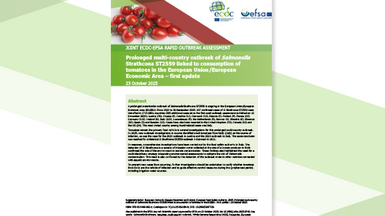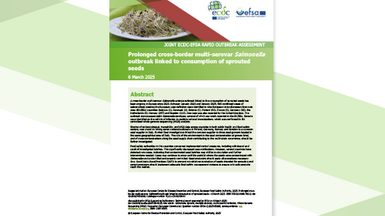Rapid risk assessment: Outbreaks of yellow fever in Angola, Democratic Republic of Congo and Uganda - 1st update, 30 May 2016
The current epidemic of yellow fever, an acute viral haemorrhagic vector-borne disease, which has seen outbreaks in Angola, Democratic Republic of Congo and Uganda, highlights the risk of infection for unvaccinated travellers. There is also a risk of further international spread through introduction of the virus into areas with a competent vector and susceptible populations.
Given that outbreaks of yellow fever in urban settings have the potential for rapid spread and that significant yellow fever epidemics are ongoing in Angola, DRC and Uganda, this risk assessment evaluates the risk of yellow fever infection being introduced into Europe and sets out a range of options for response.
Executive Summary
Current situation
From 21 January to 22 May 2016, the Angolan Ministry of Health notified 2 536 yellow fever cases, of which 747 were confirmed and 301 fatal. The number of new suspected and confirmed cases in Angola has been decreasing and a mass vaccination campaign has already reached about half of the targeted population. However, the outbreak in Angola is not yet under control and is currently expanding to additional provinces, further challenging the ongoing mass vaccination campaign. Currently, all regions in Angola should be considered as areas at high risk of transmission of yellow fever.
The yellow fever outbreak in Uganda is unrelated to the outbreak in Angola. Between 26 March and 19 May 2016, health authorities reported 60 yellow fever cases, including seven deaths in six different districts.
As of 23 May, DRC has reported 590 cases of yellow fever, 41 of these had a recent travel history to Angola.
Viraemic patients travelling to areas where suitable vectors and susceptible human populations are present pose a risk for local transmission. Such areas exist in most of the inter-tropical zones of Africa, and the Americas and Asia. Therefore, the risk of international spread within Africa and beyond is currently high.
ECDC threat assessment for the EU
In the EU/EEA, the risk of yellow fever virus being introduced is limited to unvaccinated viraemic travellers coming from areas with active local transmission. Given that outbreaks of yellow fever in urban settings have the potential for rapid spread and that significant yellow fever epidemics are ongoing in Angola, DRC and Uganda, a range of options for response by EU/EEA Member States are presented in the updated rapid risk assessment. These options emphasize the importance of vaccination of travellers and those leaving Angola, preventive measures against mosquito bites in affected areas, as well as awareness raising among clinicians to consider this diagnosis in returning travellers.







